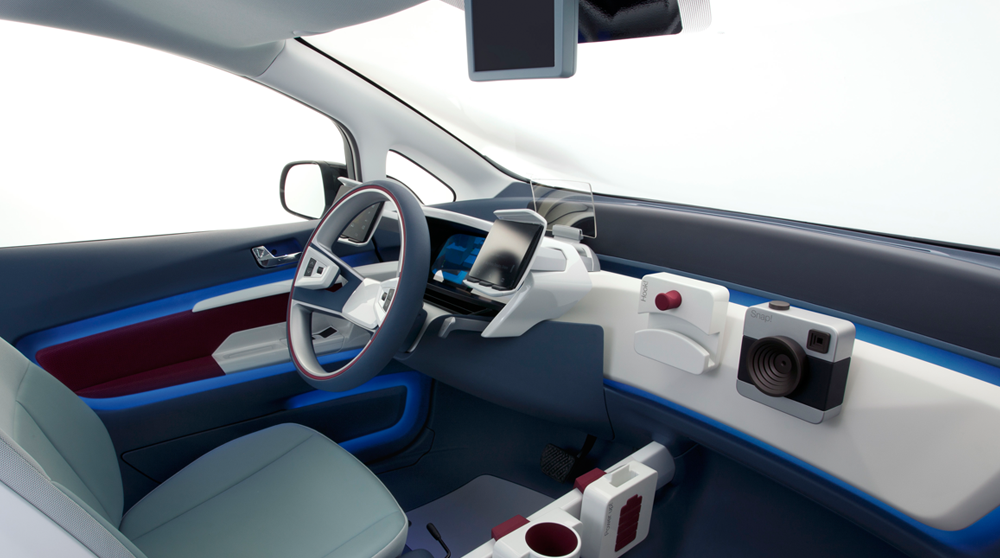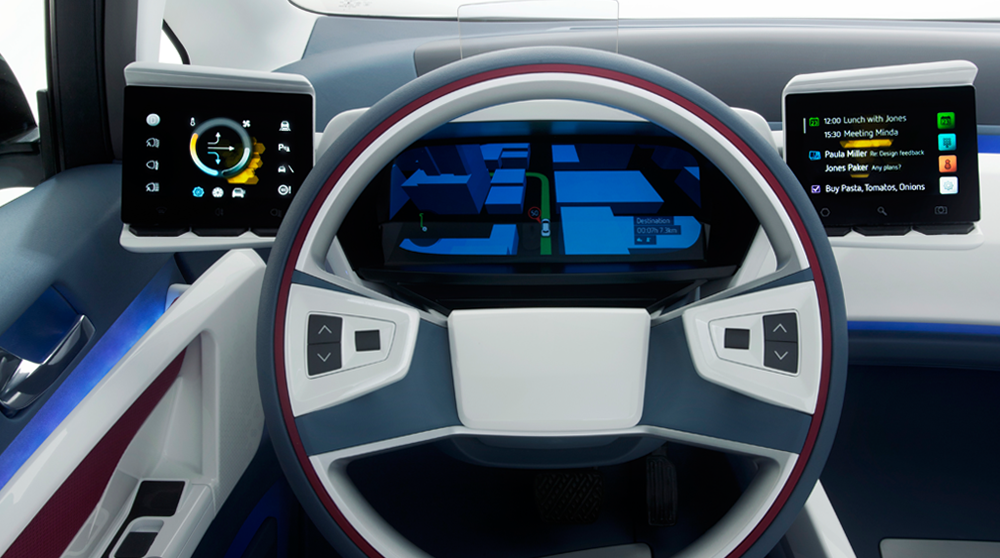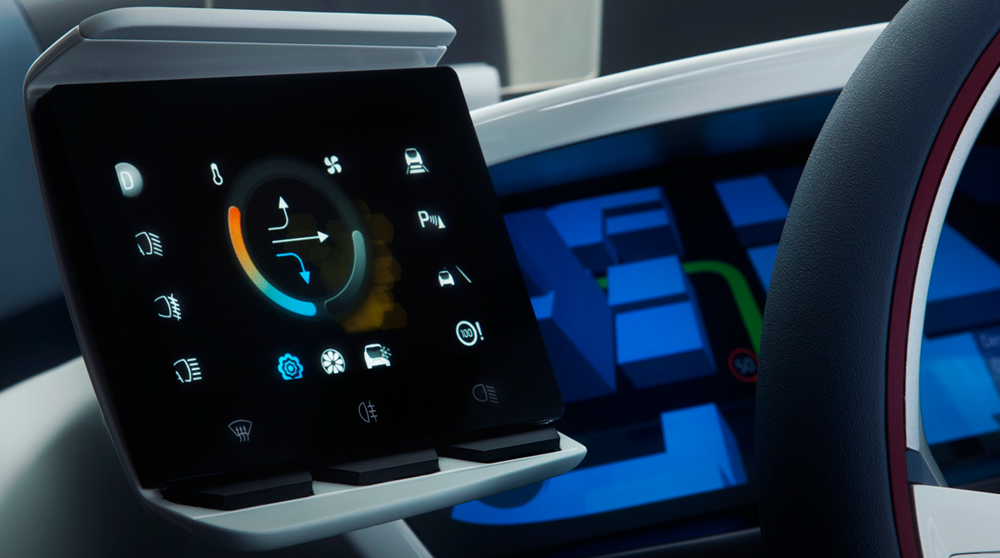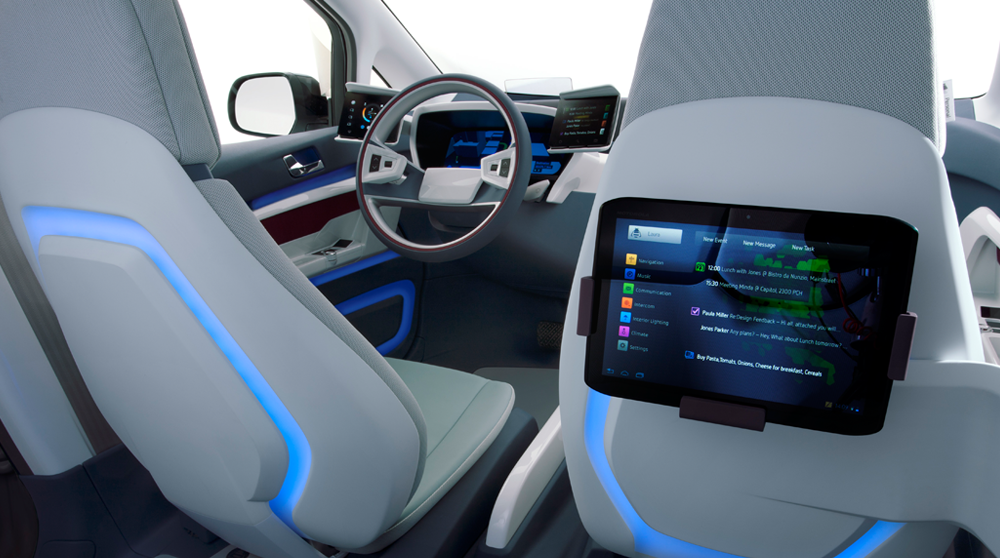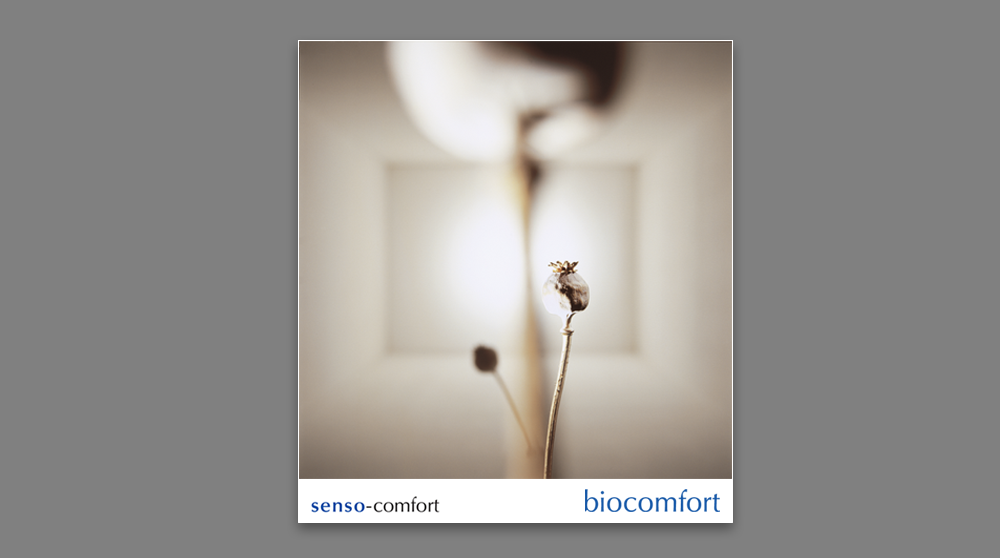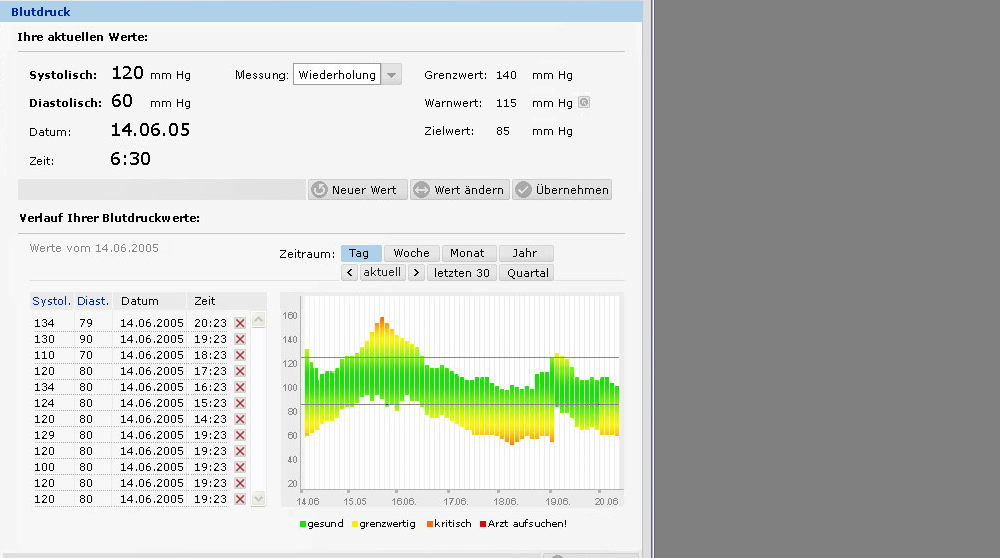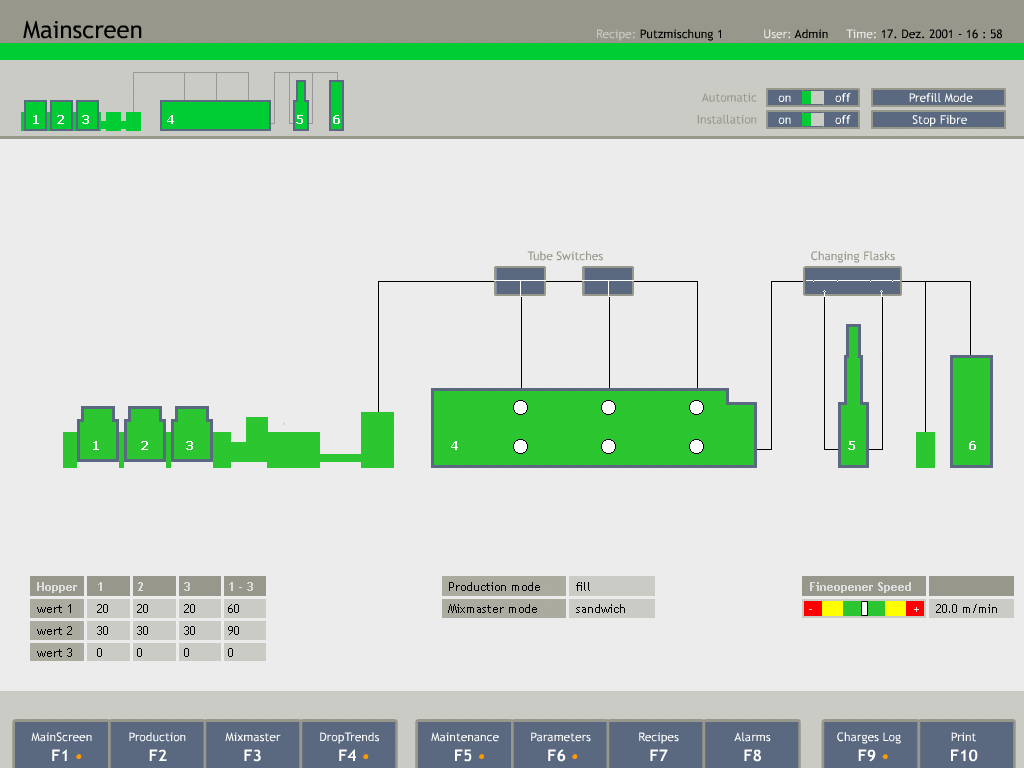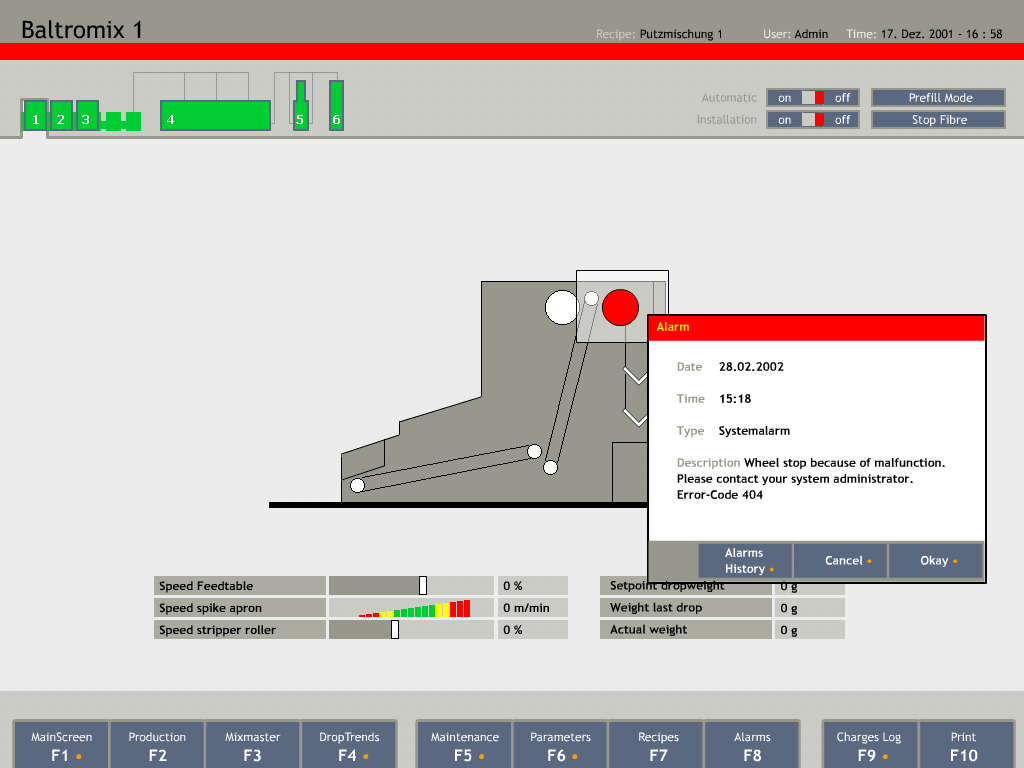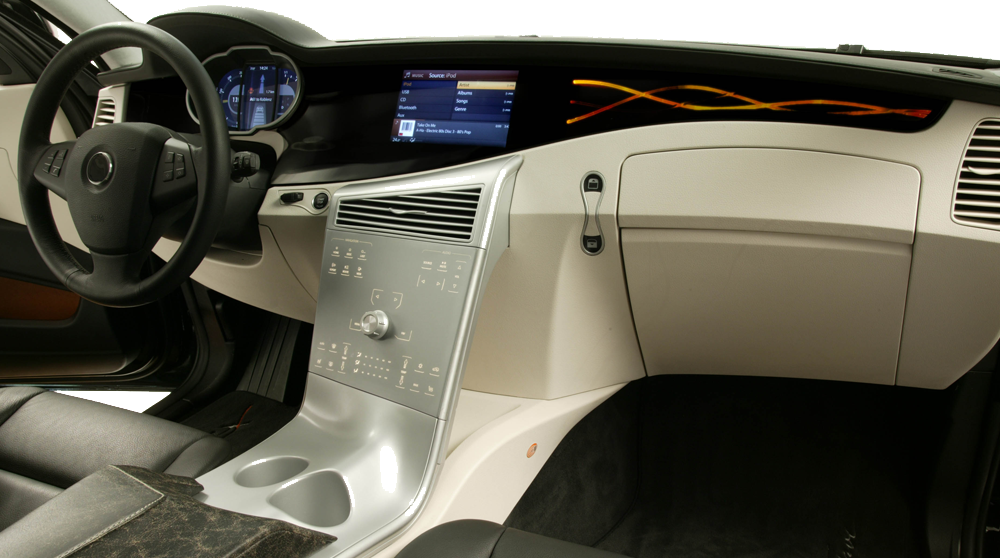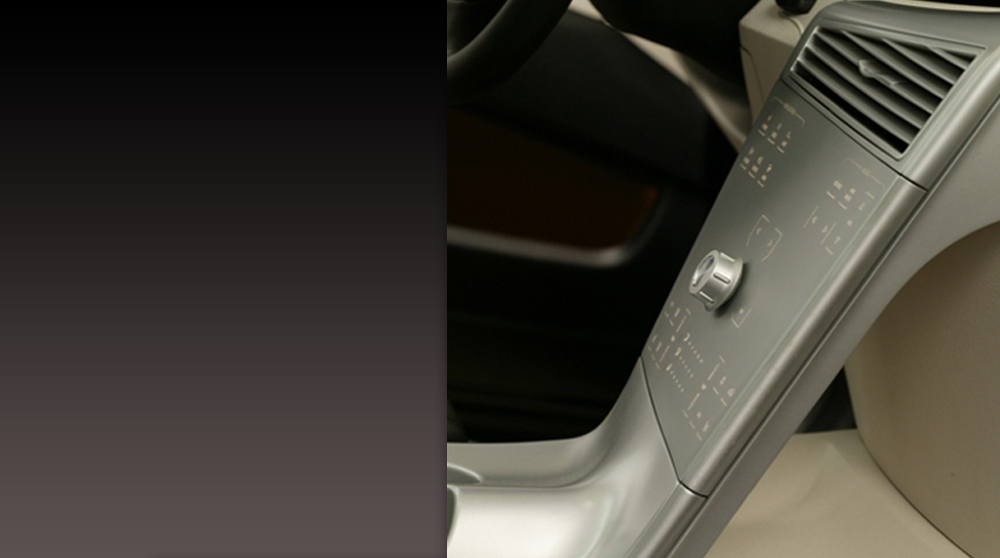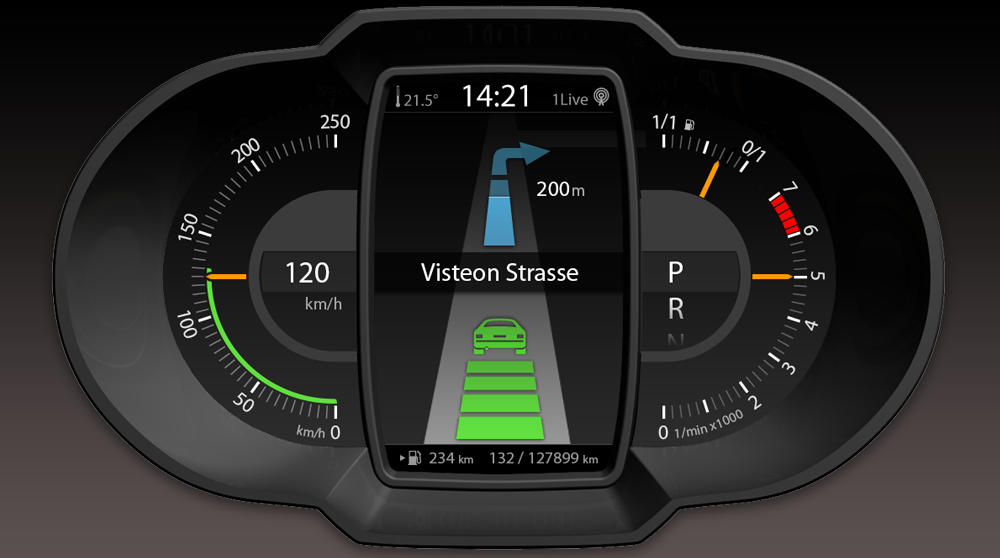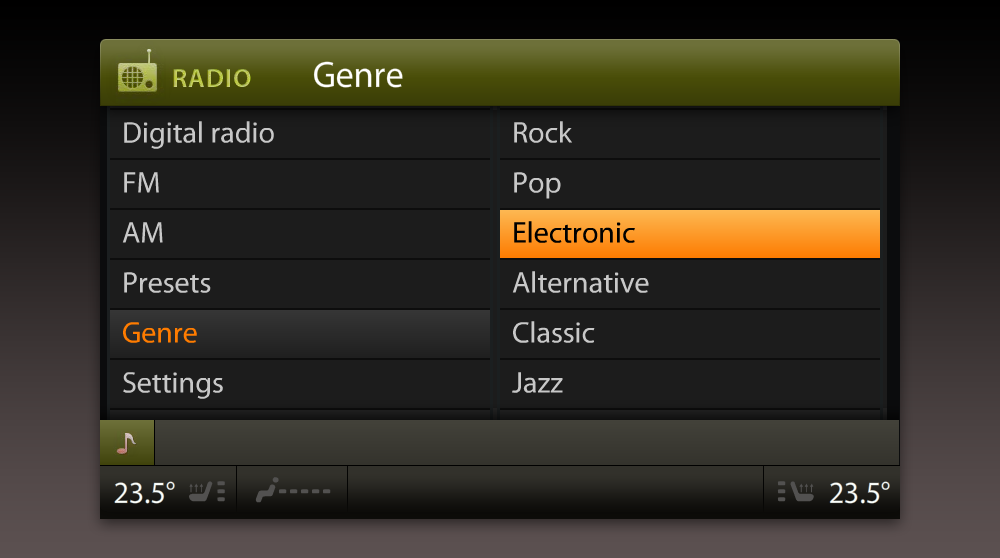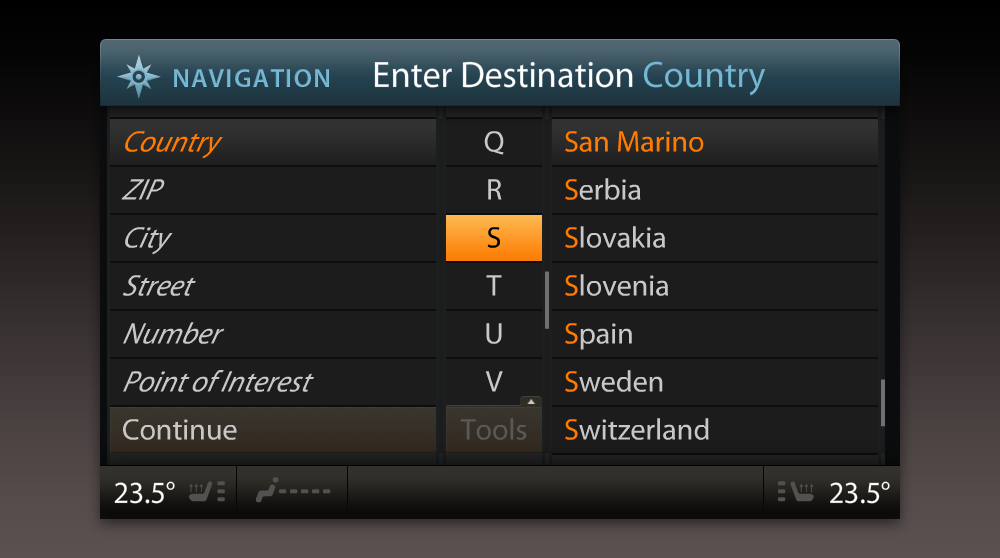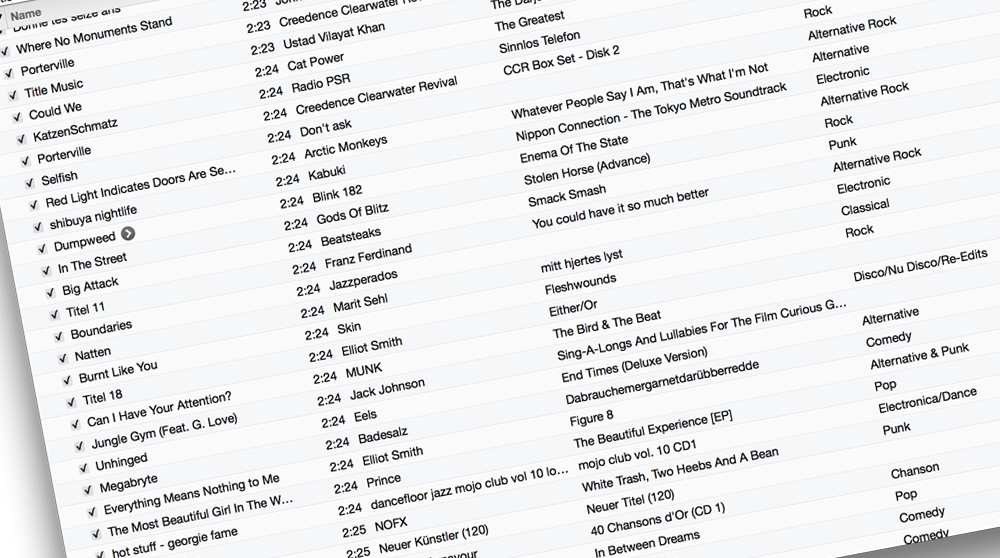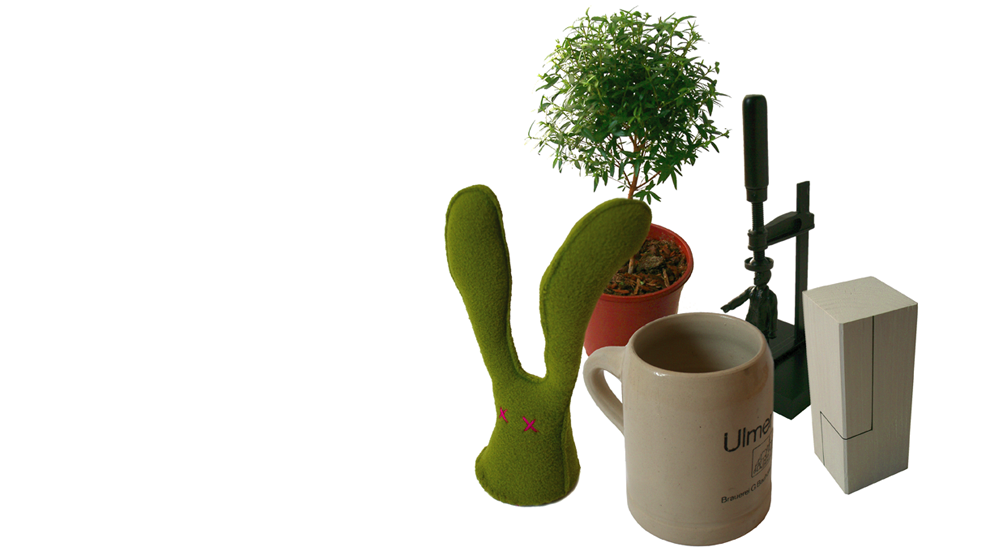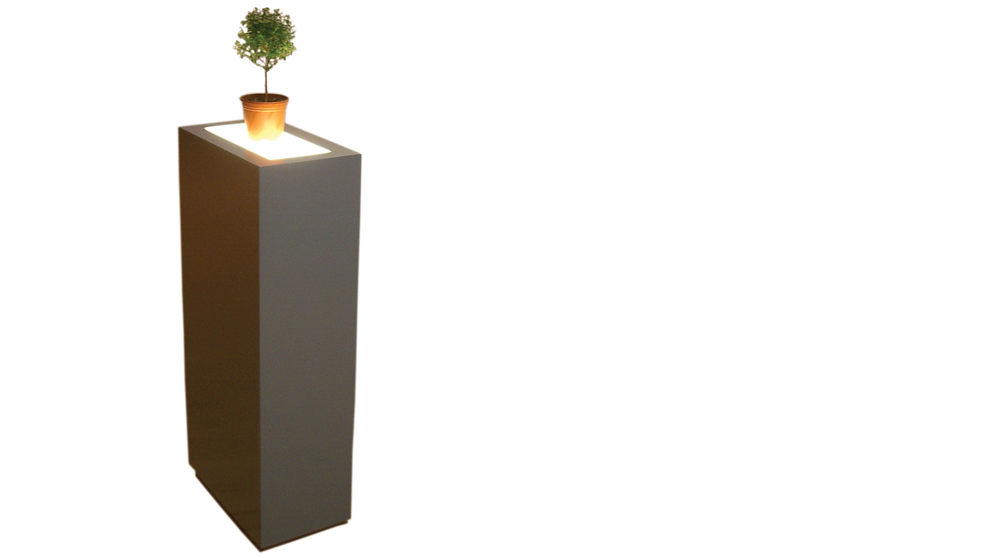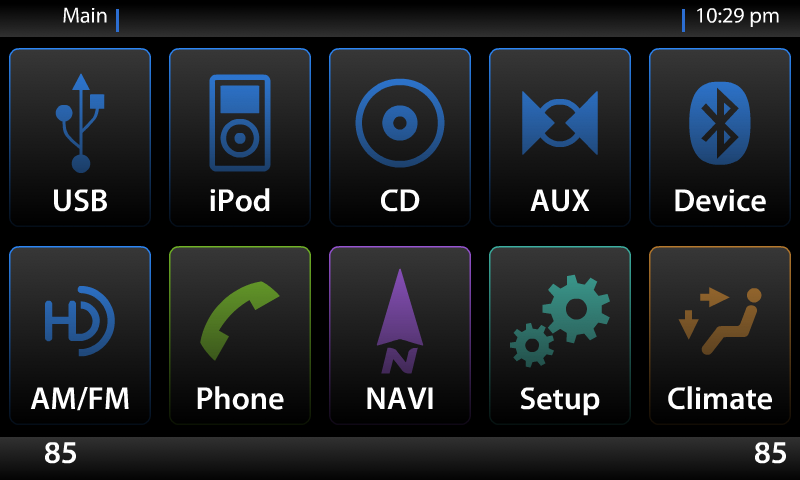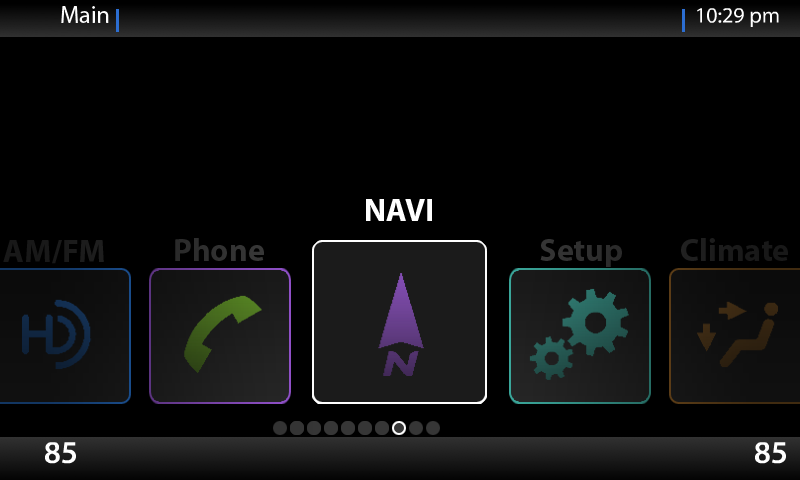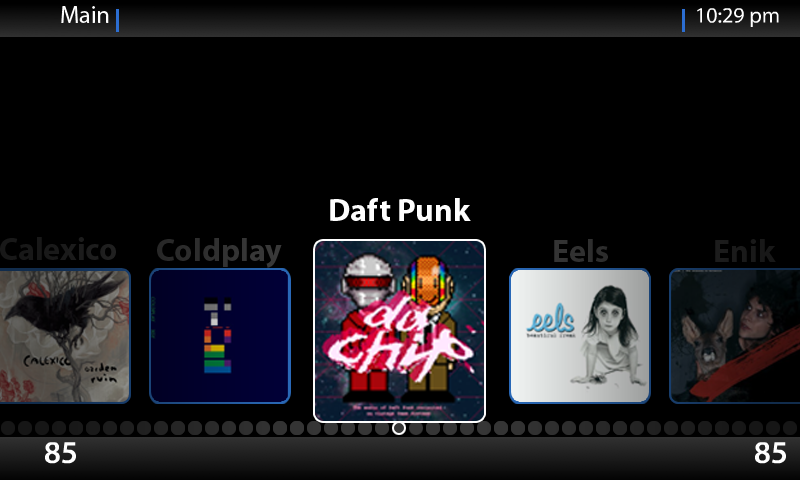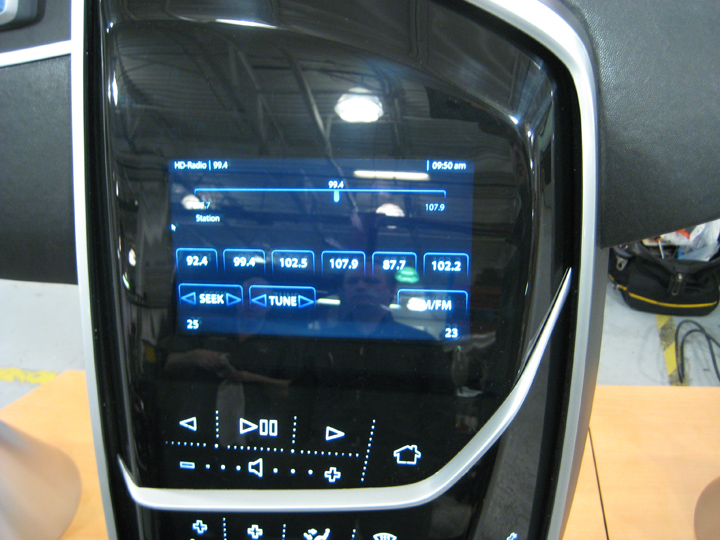The e-Bee is a concept car for 2020 with car sharing options, ride sharing and smart mobility capabilities. The vehicle is based on a regular Nissan Leaf, stripped off to the chassis and rebuilt with Visteon parts.
The goal was to design the car for not only driving from point A to B, but to let the passengers organize their digital social live while in the car and share their car with others.
The complex information of the digital live and the information from the car was divided into three separate displays: one for the driving and car related stuff (left from steering wheel), one multitouch device – on the right hand side – for infotainment and the one in front of the driver (cluster) for routing information.
On the cluster the user can see a 3D-map of the surrounding area – rendered in real time – and augmented with all the social information needed to plan the trip and the live around it.
The system is based on a central server instance from VST (ui.cockpit) which handles all the communication between system components, the car and the driver and the passenger. The whole system can be remotely controlled from an Android tablet.
External Media:
- Visteon e-Bee Microsite.
- Chief Designer (Product design) Simon Harris of the Auto Envision Group about the e-Bee concept ate CES 2013 on YouTube.
- Bertrand Stelandre (Design & Innovation manager at Visteon) at Electronica 2012 about the concept vehicle on YouTube.
The biocomfort Health Manager is a personal health monitoring system. It is able to collect all relevant health data from a patient and gives advisory information when the regarding status is getting critical. Patients are empowered to track all relevant parameters with special data collection products from biocomfort, a personal Windows-PDA and and the associated PC-software.
Together with Helma Töpper, useface generated a visual design for both systems – the PDA and PC software – to create a consistent user experience on all platforms.
The major goal was to create an joyful and accessible user interface – no matter which age or constitution the patients are. Therefore the underlying interaction patterns (operating system and user knowledge) and the info graphics played an important role in designing the intuitive UI.
Rework of a machine control system for a production line of fleece. Fiber-opening, transport, bonding and refinement to packaging.
The aim of this project was to redesign the interface for the employees to be more catchy in situations where immediate action is needed and to be as calm as possible if everything is okay. The challenge was to design within the given boundaries. No interactive elements or patterns could be changed, due to strict hardware constraints.
The concept and design was presented as a functional click dummy to demonstrate the major workflows and test the user experience with some line workers. Unfortunately the project was discarded by management before the test could be realized.
Together with the design team at Gaggenau Markendesign, useface created a usabilty and interface concept for the microwave oven series BM27x. The concept is based on the oven and espresso machine visual and interaction patterns, but with a lot more complex features – like programming and recipes like actions. The goal was to bring together the oven functionality with the microwave usage and let both lead to the same user experience.
In addition to the concept the screen layout and a lot of icons had to be created or redesigned – all in black and white – every pixel counts.
Images by courtesy of Gaggenau Hausgeräte GmbH.
External Media:
To demonstrate the full range of the supplier potential, a regular BMW X5 was nearly stripped down to the chassis and rebuilt with Visteon parts inside and a completely new interaction system and design.
Two version were built: one for the European and one for the US-market. The interior design, the graphical user interface (GUI) and the interaction principles were adapted to both markets specific needs.
The general aim – with building a prototype like this – was to improve customer appeal by optimizing the user interface and reducing complexity. The applied user-centered design approach increases customer satisfaction by the intuitiveness of the hardware controls and the graphical interface. Driver distraction is reduced to a minimum.
The interaction is based on the main rotary control – in the very centre of the dashboard – and several touch buttons with haptic feedback. Driving related output is shown on the instrument cluster display with a 3D simulation of the turn by turn navigation. Entertainment and climate control is located on the the center information display (CID).
External Media:
Superphono is the new way to listen to your personal music. You can control your personal music with your person personal assets. Everything can be made into your representative for an artist, an event (playlist) or an album from a specific artist, like in the days you collected CD or vinyls.
To control our music while scrolling through lists of items like in nowadays music software is very unromantic and not very pleasant. Superphono brings back the sympathetic experience of having a unique item with all your memories for a specific event. Just place your object on the backlit top and the music starts to play. Give it a twist to boost or reduce volume, or push it to the left or right to skip back an forth trough your list of tracks. To stop playback, just grab your gadget and put back were it was.
This proof of concept was built using vvvv to control interaction and audio output and EyesWeb to grab the video from the tagged objects.
External Media:
-
- Functional concept demo video on Vimeo
SaveSave
SaveSave
A two layered UI prototype with a regular touch interface and a gesture controlled interface concept. Clear gestures – left/right, up/down, stop, wave and hold – were used to navigate and control the system.
ICP stands for Integrated Control Panel and was presented on the 2010 and 2011 Consumer Electronics Shows. All functions for the car infotainment system for the market in North America were implemented and functional.
External Media:
- Visteon Haptic and Spacial Gesture Touchscreen – CES 2010 Video


